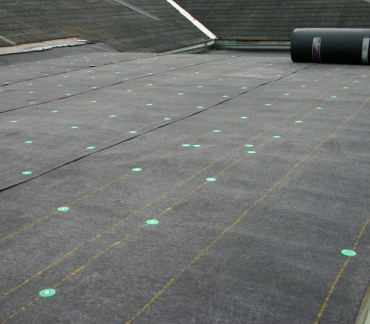 Garden roofs or green roofs have been gaining in popularity as environmental awareness increases. At first thought, it may seem a radical idea when in reality, it can be a great way to utilize otherwise wasted space. The benefits of this kind of project are much more substantial than simply growing flowers and vegetation. With some effort, almost any roof can be turned into a beautiful skyline landscape to enjoy and help conserve energy.
Garden roofs or green roofs have been gaining in popularity as environmental awareness increases. At first thought, it may seem a radical idea when in reality, it can be a great way to utilize otherwise wasted space. The benefits of this kind of project are much more substantial than simply growing flowers and vegetation. With some effort, almost any roof can be turned into a beautiful skyline landscape to enjoy and help conserve energy.
When considering this kind of project, there are a number of important details that must be thought about before getting starting, the most essential one being the ability of the supporting structure to bear such weight. A typical, flat roof weighs about five to six pounds per square foot on its own, so it is imperative to know how much of a saturated load the structure can handle. Only then would it be safe to plan which type of green roof will be installed – extensive or intensive.
- Extensive – An extensive garden roof is lighter, smaller and requires less maintenance. Using between 2 to 6 inches of substrate, the saturated load is about fifteen to eighteen pounds per square foot, allowing for extensive plants to be grown even on metal. These gardens are usually planted with low growth plants having shallow roots, not requiring any kind of irrigation system as rain water is usually sufficient water especially if drought-resistant plants are used. Because of this, the extensive plan also provides the most runoff control since more water is absorbed with this than irrigated gardens.
- Intensive – Intensive layouts are much heavier, consisting of deeper plant beds that require much more soil and substrate. While this allows for a wider variety of plants to be grown, it also makes irrigation a necessity as well as increases the load per square foot to upwards of 100 pounds. Add to that any other landscape or hardscape features and the load is even greater. These types of roof gardens are only suitable with structural concrete roofs and generally require a lot more maintenance.
Installation
Besides roof weight-bearing capabilities, other important factors are installation requirements to provide waterproof protection and other modifications to ensure stability. In some situations and especially with older buildings, the amount of required work outweighs any benefit, making the idea a lot less appealing. There are emergency drainage and wind updraft concerns that need to be addressed as well as fireproofing and testing of the roof waterproofing membrane before any garden plan is ready to go.
Benefits
Although this may seem like a fun and interesting project, installing a garden roof is a lot of hard work and initial expense. Once plants have been put in and are well-established, benefits will begin to be noticed. Lower cooling and heating bills and in some cases home-grown food can be the result. Environmentally, reducing storm water runoff has been known to help prevent sewer flooding and soil erosion while aiding in the prevention of elevated urban heat and poor air quality.
A garden at the top of any building can be an environmentally friendly way of reducing the cost of energy while adding a perfect touch of nature that looks great and provides a calming environment to escape the rigors of city life!
Call Schulte Roofing To Be Your Expert Houston Roof Builders!
Are you interested in finding a Houston roof firm to help make decisions about installing a garden roof? Contact the experts at Schulte Roofing at 800-367-7663 for professional advice for all Houston area customers about such a project!
